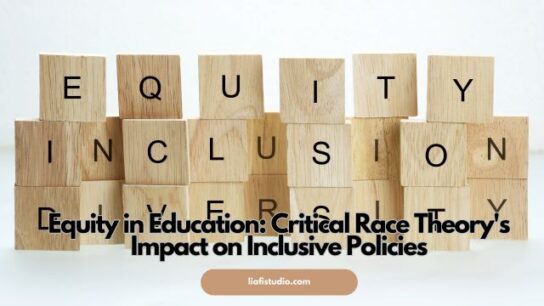Table of Contents
- Introduction
- Benefits of Technology in Education
- Implementing Technology Effectively
- Challenges and Solutions
- Real-World Examples
- Future Predictions
- Conclusion
Introduction
Education is rapidly evolving with the advent of digital technologies. These innovations are not just enhancing learning experiences but are also transforming the traditional education system. By leveraging education IT solutions, schools and universities can effectively integrate technology to improve teaching and learning processes. These solutions encompass various tools and strategies to create a more efficient and personalized educational experience. This article will explore how integrating technology in education can revolutionize teaching and learning. The potential benefits of boosting student engagement and overcoming common educational challenges are numerous and transformative. Through real-world examples and strategic implementations, we can see how schools thrive in this digital age.
Benefits of Technology in Education
Technology in education offers numerous advantages. From personalized learning experiences to increased accessibility, the potential benefits are vast. New research shows that technology-driven teaching strategies can greatly raise student engagement and academic achievement. The study highlights that students using digital learning tools are likelier to stay interested and motivated.
Some of the key benefits include:
- Personalized Learning: Technology allows customized learning experiences that cater to individual student needs, making education more effective and engaging. For example, adaptive learning platforms can adjust the difficulty of assignments based on the student’s progress.
- Enhanced Collaboration: Digital tools facilitate better communication and collaboration among students and educators, fostering a more interactive learning environment. Tools like Google Classroom and Microsoft Teams enable real-time collaboration on projects and assignments.
- Increased Accessibility: Notwithstanding physical or geographic constraints, students can access education using online resources and technologies. Students can access lectures, assignments, and study materials from any location, breaking down educational barriers.
- Real-Time Feedback: Technology enables immediate feedback on assignments and assessments, helping students learn and improve quickly. This instant feedback loop helps students understand their mistakes and grasp concepts faster.
Implementing Technology Effectively
Successful technology implementation requires strategic planning and execution. Schools must invest in robust infrastructure and provide training for educators to maximize the benefits. A comprehensive guide by Education World highlights several best practices for integrating technology in classrooms. These practices range from setting clear objectives to involving all stakeholders.
Steps to Implement Technology in Education:
- Assess Needs: Determine your school’s and pupils’ particular requirements. Conduct surveys and gather feedback to determine the most beneficial technology solutions.
- Choose the Right Tools: Choose the right digital tools and platforms to support your learning objectives. Consider factors like ease of use, cost, and scalability when making choices.
- Invest in Infrastructure: Ensure you have a robust IT infrastructure to support the technology. It includes high-speed internet, adequate hardware, and reliable software platforms.
- Train Educators: Provide comprehensive training for teachers to use the technology effectively. Ongoing professional development ensures educators stay updated on the latest technological advancements and teaching methods.
- Monitor and Evaluate: Regularly evaluate how technology affects learning and make the required changes. Use metrics like student performance, engagement levels, and feedback from teachers and students to evaluate effectiveness.
Challenges and Solutions
Despite its benefits, technology in education has challenges. Problems including reluctance to change, cybersecurity, and the digital divide must be addressed. Solutions can include:
- Providing equitable resource access.
- Implementing strong security measures.
- Fostering a culture of adaptability among educators and students.
Common Challenges:
- Digital Divide: Some kids have different internet access levels and digital gadgets. This disparity can hinder the effectiveness of technology in education.
- Cybersecurity: Protecting student data and maintaining online security is a growing concern. Cyberattacks on educational institutions can compromise sensitive information and disrupt learning.
- Resistance to Change: Some educators and students may resist adopting new technologies. This resistance may result from unlikely familiarity or dread of the unknown.
Effective Solutions:
- Equitable Resource Access: Provide devices and internet access to students who lack them. Initiatives like providing low-cost laptops and internet hotspots can bridge the digital divide.
- Strong Security Measures: Implement robust cybersecurity protocols to protect sensitive information. Regular security audits and training on best practices can help maintain a secure digital learning environment.
- Training and Support: Instructors and students should receive ongoing training and support. Creating a support system where teachers can share best practices and troubleshoot issues can facilitate smoother transitions.
Real-World Examples
Various educational institutions worldwide have successfully integrated technology into their curriculum. For instance, many schools use virtual reality (VR) to create immersive learning experiences, while others use artificial intelligence (AI) for personalized instruction. These technologies are transforming how students interact with content and understand complex concepts. An example is the use of VR in science classes, where students can explore the inside of a cell or travel to ancient civilizations, making learning more engaging and effective. Similarly, AI-driven platforms can provide personalized learning paths for students, addressing their unique strengths and weaknesses. Institutions like Stanford University are experimenting with AI tutors that offer customized lessons to help students master complex subjects.
Future Predictions
The future of education lies in continuous technological advancement. New technologies are predicted to change education further and make learning more accessible and engaging. These advancements could create a more equitable and efficient education system. For example, blockchain technology could revolutionize storing and sharing academic credentials, ensuring greater transparency and security. With blockchain, students can have secure, verifiable digital records of their achievements. Additionally, AI-powered tutoring systems may evolve to provide even more personalized and adaptive learning experiences, catering to each student’s unique needs.
Conclusion
Technology can transform education by developing novel solutions to current problems. As we progress, focusing on practical implementation and continuous improvement is crucial to harness educational technologies’ powerfully. By tackling issues and utilizing best practices, academic institutions may establish a dynamic and inclusive learning environment for all students.







